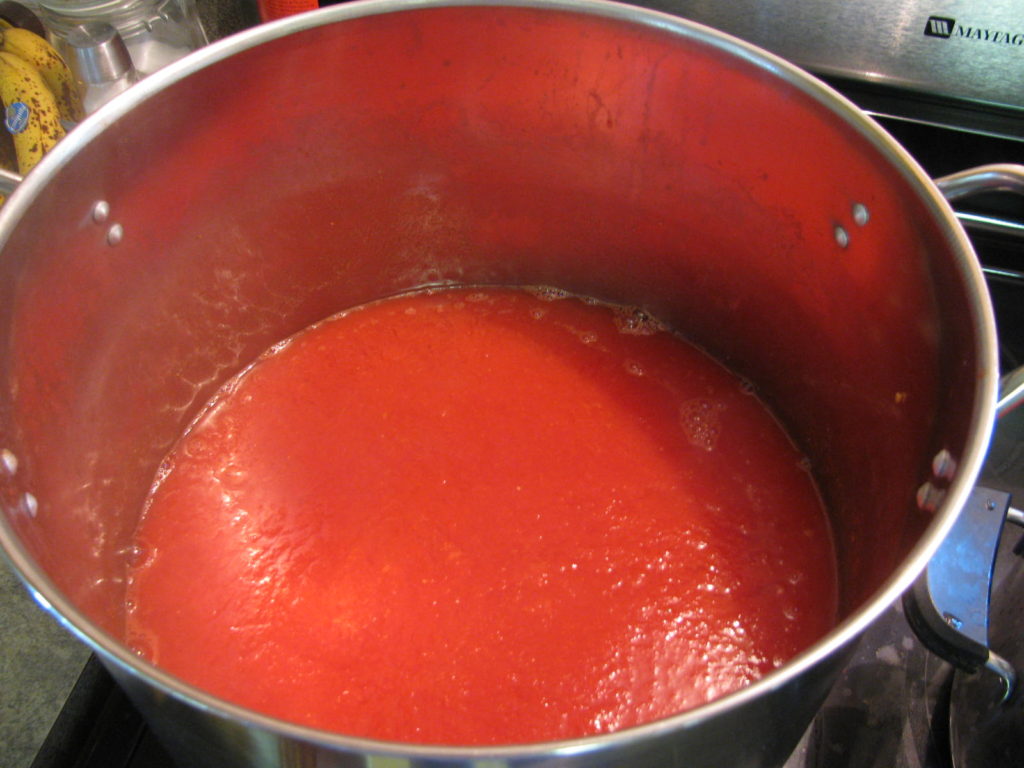Craving a homemade tomato sauce that bursts with flavor? Look no further! This guide will walk you through the simple steps of transforming fresh, ripe tomatoes into a rich and delicious sauce. Whether you’re a seasoned cook or just starting out, you’ll be able to create a sauce that’s perfect for pasta, pizza, or any dish that calls for a tangy, savory flavor. Let’s get started on your homemade tomato sauce journey!
WHAT KIND OF TOMATOES MAKE THE BEST SAUCE?
Roma tomatoes are ideal for making tomato sauce because they’re less juicy than Beefsteak or field tomatoes, which means they cook down faster. However, this also means that the sauce may take longer to thicken. To compensate for this, you can simmer the sauce for a longer period of time or add a thickening agent like cornstarch or flour. Roma tomatoes also have a firm flesh that holds up well during the cooking process, preventing the sauce from becoming watery. Additionally, their slightly acidic flavor complements the sweetness of other ingredients in the sauce.
HOW TO MAKE HOMEMADE TOMATO SAUCE
When I make tomato sauce, I begin by washing all the tomatoes in the sink or a large bowl. There’s no need to peel them, as my trusty food mill will handle that part. After rinsing a batch thoroughly, I cut the tomatoes into quarters and place them in a large stock pot or sauce pot.
For particularly large tomatoes, I cut them into even smaller pieces to ensure they heat up and break down quickly.
I set the stove burner to medium-low or medium heat and let the tomatoes start warming up while I quarter more tomatoes and prepare them on another burner. Once the tomatoes have softened, I use a potato masher to start mashing them.

MAKE TOMATO SAUCE FROM FRESH TOMATOES
I don’t add any water to the saucepans, so I make sure to start mashing the tomatoes promptly to help create some liquid at the bottom of the pot.
After mashing, I let the tomatoes cook undisturbed until they begin to simmer. This process helps break them down quickly, preparing them for the next step.
In the picture above, you can see the mixture of skins, seeds, and plenty of liquid. This pot of tomatoes is now ready to go through the mill.
SIMMERING TOMATOES
Don’t rush to remove the pots from the stove; let the tomatoes cook until they’re very soft. This usually takes between 15 and 30 minutes, depending on their size. Allowing the stove to do the work will save you a lot of mashing.
I often use all four burners: three pots are on the stove reducing the tomatoes, and the fourth burner holds the actual sauce. I keep adding to the sauce pot as I mill more tomatoes.
I get into a rhythm with cutting, quartering, reducing, milling, and simmering the sauce. It’s a fast-paced process of cutting, stirring, mashing, milling, and then cutting again. With this routine, you’ll find you can work quickly. Plus, it’s motivating to see the progress every time you look away from the stove.
When the tomatoes are well-mashed and heated through, it’s time to run them through the food mill.
USING A FOOD MILL TO MAKE HOMEMADE PASTA SAUCE
I pour the tomatoes into the mill and turn the handle until I get the consistency I want. Since some tomatoes turn to juice while heating, that juice flows straight through the mill into the bowl or pot below.
I don’t need to remove the tomato cores when quartering, as the mill separates the juice from the seeds and skins perfectly.
The good stuff goes into the pot, and the waste stays in the mill. I clean the mill after each batch using a large spoon to scoop out the waste, which I then transfer to a bucket. When the bucket is full, I give it to the chickens, who love it.
No chickens? No problem. Just add the waste to your compost pile, and your garden will benefit next year!

SIMMERING THE TOMATO SAUCE
Once I have some sauce in the large pot, I set the burner to medium-low. As I add more sauce and the pot fills up, I increase the heat to high to bring it to a boil, then reduce it to a simmer.
Simmering helps reduce the water in the tomatoes and thickens the sauce. Since we want a thick sauce, I leave the pot uncovered and let it simmer for a while, sometimes up to 2 days. I stir it frequently while I’m in the kitchen, and at night, I turn the burner down to low.
This way, the sauce continues to reduce overnight, and in the morning, I’ll see a noticeable difference in the quantity. When stirring in the morning, I avoid stirring all the way to the bottom to prevent mixing in any potentially scorched sauce.

This picture was taken later in the day, and as you can see, I’ve been busy making more tomato sauce. By this point, there are three pots of sauce cooking.
Notice the sauce that collects on the sides of the pots? I scrape that off periodically and stir it back into the sauce using a rubber spatula. It’s flavorful, so be sure to incorporate it!
Once the large pots have reduced a bit, I transfer the contents of the smaller pot into the two larger ones, dividing it evenly. This frees up the smaller pot so I can quarter more tomatoes and start another batch of sauce.
In the morning, I begin canning the pot of sauce that has been simmering the longest. I don’t add any new sauce to these pots in the morning, as they are already thickened and adding more would dilute the sauce.
I find that I can get into a good rhythm with canning. I start by canning one pot of sauce and leave the other to simmer longer. With one large pot emptied, I prepare more tomatoes and add them to the new pot.
Making your own tomato sauce is straightforward and enjoyable. I love spending a few days canning in the kitchen. Last year, I even tried making homemade HP sauce (similar to A1 sauce) and canned it using the same method as this tomato sauce.
The best part of canning for me is seeing all those jars lined up on our pantry shelves, knowing they contain wholesome, healthy food. These tomatoes were grown without chemicals, which assures me that the food we’re eating is good for us. If you can, find a market or farmer’s market that advertises chemical-free produce.
Your family and your body will appreciate the effort you put into serving healthy, homemade meals.
CONCLUSION
By following these simple steps, you can turn fresh tomatoes into a delicious and flavorful homemade tomato sauce. Whether you’re a seasoned cook or just starting out, this recipe is easy to follow and can be customized to your taste preferences. So, grab your favorite tomatoes and get cooking!


